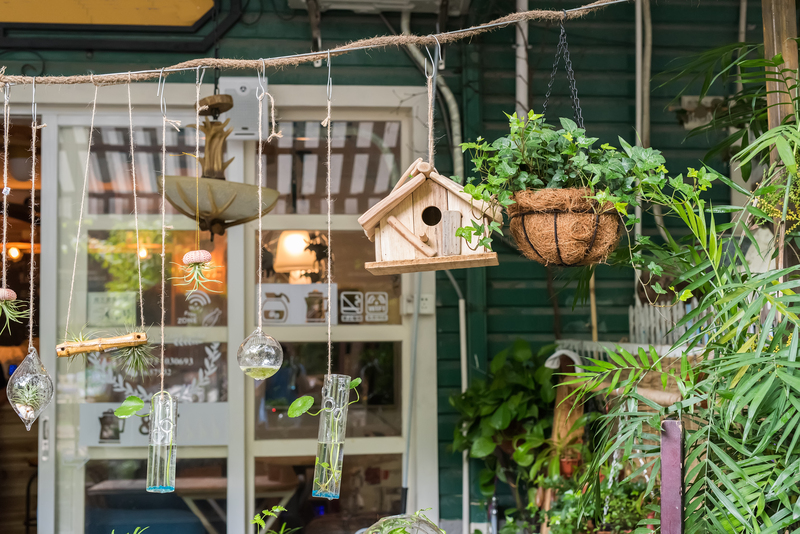Collaborative Efforts to Halt Microplastic Pollution: A Comprehensive Overview
Microplastic pollution has rapidly emerged as one of the most urgent environmental concerns of our era. These tiny particles--measuring less than 5 millimeters--litter our oceans, soil, rivers, food chains, and even the air we breathe. Tackling such a pervasive issue demands not just isolated actions, but global, multi-sector, and collaborative efforts to halt microplastic pollution entirely. In this detailed article, we unravel how governments, industries, researchers, organizations, and individuals are coming together to combat this silent threat, analyzing strategies, successes, and future directions.

Understanding Microplastic Pollution: The Scope of the Problem
Before delving into collaborative efforts to stop microplastic pollution, it is important to understand what microplastics are and why they pose a critical risk. Microplastics originate from a variety of sources:
- Primary microplastics: Manufactured particles used in products like cosmetics and cleaning agents.
- Secondary microplastics: Resulting from the breakdown of larger plastic debris through weathering, sunlight, or mechanical forces.
Microplastic pollution affects:
- Marine life--causing ingestion, toxicity, and death.
- The human food chain--seafood, salt, and even drinking water have shown traces of microplastics.
- Soil health--harming agricultural productivity and soil biodiversity.
- The broader ecosystem--disrupting natural processes and threatening biodiversity.
Given the physical, chemical, and biological persistence of microplastics, a global, united approach is needed to mitigate and ultimately eliminate microplastic pollution.
The Power of Collaboration: Why Multi-Layered Efforts Matter
Why does collaboration matter? Microplastic pollution is a transboundary issue; it flows with water, wind, and commerce, making isolated interventions less effective. Sharing knowledge, pooling resources, and coordinating policy are vital to create lasting impact. Below, we explore key facets of cooperation at the international, national, industrial, scientific, and community levels--each playing a unique and essential role.
International Cooperation to Curb Microplastic Contamination
Microplastics know no borders; thus, international frameworks are essential for addressing global microplastic pollution. Some landmark collaborative efforts include:
- The United Nations Environment Programme (UNEP): UNEP leads convenings on plastic pollution and funds research, helping countries develop policies and environmental monitoring programs.
- Global Partnership on Marine Litter (GPML): An inclusive platform bringing together governments, stakeholders, experts, and NGOs to target marine microplastics through joint initiatives.
- The EU Plastics Strategy: The European Union has enacted strategies targeting single-use plastics, microbead bans, and research funding, often sharing research and policy successes with other regions.
- Basel Convention Amendments: Recent amendments now require the informed trade and treatment of plastic waste, a crucial step for reducing mismanaged plastics and their degradation into microplastics.
Countries such as Canada, Kenya, and India have adopted robust regulations in response to international dialogues, embracing bans on microbeads and single-use plastics. Through treaties, knowledge co-creation, and funding mechanisms, the world is aligning for a shared microplastic-free future.
Industry and Corporate Collaborations to Tackle Microplastics
The global plastic value chain--from raw material extraction to product manufacturing, use, and disposal--necessitates cooperation among industries. Responsible corporate action, coupled with regulatory frameworks, is key to reducing microplastic emissions:
- Microbead Phase-Out: Leading companies in the cosmetics and personal care sectors have voluntarily--and by law--removed microbeads from shampoos, face washes, and toothpaste.
- Sustainable Packaging Coalitions: Brand alliances such as the Ellen MacArthur Foundation's New Plastics Economy target waste elimination, reuse, and plastic innovation.
- Textile Industry Initiatives: Since synthetic fibers from clothes contribute to microplastic pollution, fashion and apparel giants are innovating sustainable materials, collaborating on wastewater filtering technology, and advocating for producer responsibility.
- Automotive & Tire Industry: Tire wear releases significant microplastics. Consortia--such as the Tire Industry Project--invest in research for less abrasive materials and effective end-of-life tire management.
- Waste Management Partnerships: Industry-government collaborations support better recycling infrastructure to prevent plastic fragmentation and promote circularity.
Transparent supply chains, eco-design, and responsible innovation are cornerstones in corporate efforts to halt microplastic pollution.
Scientific Research and Knowledge Sharing
Scientific collaboration remains central in both quantifying the problem and crafting solutions. Academic scientists, governmental research bodies, NGOs, and citizen science initiatives all contribute to an ever-growing knowledge base:
- Standardized Sampling and Monitoring: Projects such as the International Pellet Watch and the Global Microplastics Initiative share methodologies, databases, and results to inform policy and innovation worldwide.
- Innovative Filtering Technologies: Researchers are developing advanced filtration systems for wastewater treatment plants, stormwater runoff, and industrial effluent--critical pathways for secondary microplastic release.
- Alternative Material Development: Chemists and engineers collaborate globally on biodegradable plastics, natural fiber composites, and coatings to prevent abrasion and breakdown.
- Health Impact Studies: Epidemiologists work across regions to assess microplastics in human tissues, the food supply, and drinking water, fostering a better understanding of long-term risks.
- Open Access Science: Through open journals, global conferences, and shared digital resources, breakthroughs are spread more quickly and inspire new collaborative efforts to curb microplastic pollution.
Science-based policymaking and technology transfer play a pivotal role in shaping market and society-wide responses.
Government Policies and Multi-Agency Efforts
In coordination with other stakeholders, governments enact and enforce policies aimed at halting microplastic pollution. Effective governance combines:
- Legislation banning intentional microplastics in products (e.g., microbead prohibitions).
- Regulations for plastic waste management, recycling, and product take-back schemes.
- Incentives for industry to adopt eco-design, recycled content, and bioplastics.
- Support for public-private partnerships improving waste infrastructure and public awareness.
- Funding for research, citizen science, and environmental monitoring.
Diverse agencies--ministries of environment, industry, fisheries, and public health--often work together and in concert with international organizations to harmonize responses.
Grassroots and Community-Driven Actions
While policy and industry changes are fundamental, individuals and communities also play a crucial role in halting microplastic pollution:
- Beach and River Clean-ups: Local NGOs, schools, and civic groups organize clean-up drives, often supported by data-driven apps to track and categorize plastic types.
- Citizen Science Monitoring: Volunteers collect water and soil samples, report microplastic levels, and lobby for stricter policies based on findings.
- Consumer Campaigns: Social media and local campaigns highlight the dangers of microplastics, guide consumer choices, and pressure brands for change.
- Education and Outreach: Interactive workshops, school curricula, and public exhibitions spread awareness from early ages.
Community-level action helps translate abstract policy and science into tangible, daily change, amplifying collaborative efforts to reduce microplastic pollution worldwide.
Innovative Approaches in the Battle Against Microplastics
Technology and Innovation Driving Solutions
Combating microplastic contamination requires not just cooperation, but cutting-edge innovation:
- Advanced Filtration Systems: Microplastics are being captured at municipal waste plants, industrial outflows, and even washing machines using fine mesh filters and electrochemical methods.
- Enzymatic Degradation: Biotechnological breakthroughs are enabling enzymes and microbial cultures to degrade plastics more quickly and efficiently.
- Smart Packaging: Smart labels and biodegradable wrapping minimize environmental impact and track post-use disposal.
- AI and Remote Sensing: Artificial intelligence and satellite technology identify and track hotspots of microplastic pollution for targeted clean-up and monitoring.
Financial Models for Sustained Impact
- Extended Producer Responsibility (EPR): Making producers responsible for their products through their life cycle ensures companies design for recycling, fund waste collection, and invest in circular approaches.
- Green Bonds and ESG Investing: Investors are channeling capital into enterprises and innovations that reduce microplastic leakage, signaling market rewards for leadership.
Success Stories: The Power of Collaboration in Action
- Microbead Bans: Over 60 countries have now legislated bans on microbeads in toiletries, an early and symbolic win in the collaborative fight against microplastic pollution.
- NGO-Industry Science Partnerships: NGOs like The Ocean Cleanup and Plastic Soup Foundation work directly with corporations and governments, leveraging crowd-sourced data and novel technologies to remove plastics at river mouths and ocean gyres.
- Global Awareness Campaigns: High-profile campaigns such as #BreakFreeFromPlastic mobilize millions of individuals and thousands of organizations, amplifying impact and policy change worldwide.
Challenges and Barriers in Stopping Microplastic Pollution
Despite remarkable progress, significant hurdles persist:
- Fragmented Regulation: Inconsistent laws across countries allow microplastics to slip through policy cracks and across borders.
- Limited Waste Infrastructure: Developing nations often lack investment for advanced sorting, recycling, and filtration systems.
- Knowledge Gaps: The long-term health effects of microplastics are still being uncovered, complicating regulation and risk communication.
- Consumer Behavior: Convenience culture and misinformation remain barriers to adoption of sustainable alternatives.
Strong collaboration at every level is needed to overcome these challenges and accelerate a transition to zero microplastic leakage.
What You Can Do: Harnessing Collective Action
Halting microplastic contamination is a collective task--and you can be part of the solution. Collaborative efforts to stop microplastic pollution succeed when empowered by informed, passionate individuals. Consider these actions:
- Choose products free from microbeads and unnecessary plastics.
- Support local and global clean-up efforts--organize, donate, or volunteer.
- Advocate for policy changes with your representatives.
- Support companies and brands committed to plastic reduction and transparency.
- Join citizen science programs and help collect critical data.
- Spread the word--educate family, friends, and your community on the ramifications of microplastic pollution.

Future Directions: Building Stronger Global Alliances
Effective, durable solutions to microplastic pollution require even tighter collaboration across all sectors. The future will see:
- Increased harmonization of policies and standards through global treaties.
- Transparency and full life-cycle tracking for plastic products.
- Expansion of producer responsibility and investments in green innovation.
- A thriving ecosystem of data sharing, open innovation, and public engagement.
By acting together, we can realize a world where microplastics no longer pollute our planet or endanger our health.
Conclusion: The Promise of Collaboration in Halting Microplastic Pollution
Collaborative efforts to halt microplastic pollution represent one of the most inspiring and necessary movements of the 21st century. Whether through international policy, industry transformation, scientific discovery, or grassroots activism, humanity is demonstrating its capacity to meet complex global challenges head-on. By pooling expertise, resources, and determination, we have the power to preserve our oceans, health, and ecosystems--not just for today, but for generations to come. The journey to a microplastic-free future starts with united action. Join the movement and help turn the tide against one of the defining environmental threats of our time.